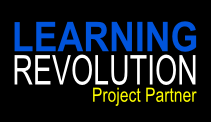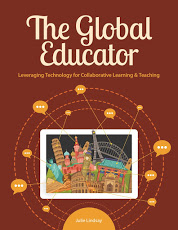Presenter: Rodd Lucier
Location: Komoka, Ontario, Canada
Link to presenter’s K12Online Ning Profile page
Presentation Title: Creative Commons: What Every Educator Needs to Know
Presentation Description: Creative Commons is the most powerful mechanism for media development you’ve never heard of. In this presentation, you will discover how learners of all ages are gaining access to millions of free images, audio files, video elements, and written materials allowing the creation of unique multimedia products.
DotSub Video Presentation Link
Blip m4v direct link (video file)
Blip mp3 direct link (audio file)
Link to presentation’s supporting documents:
http://creativecommons.org
Additional Information:
Rodd Lucier
Blog: thecleversheep.com
Twitter: @thecleversheep
Personal iOS Application








Thanks for sharing good information – I especially like the notice regarding the content of the photograph. As a photographer who uses CC, I am always a bit concerned about my subject’s rights…thus, my photography of people is rare. Once again, it is too bad (but ever so critical that) we need to be so cautious of the abuse!
Pingback: Keep it real « READINGPOWER
Pingback: Langwitches Blog » K12 Online Conference 2010
Pingback: Langwitches Blog » Creative Commons: What Every Educator Needs to Know
Excellent presentation. A link to your presentation has already become a part of my online handouts.
Here are the (xmind) notes that I took during the presentations: http://bit.ly/cwbz0W
Pingback: Technology in the Middle » Blog Archive » Digital Literacy 2010: Copyright, Fair Use, and Creative Commons
Thank you, Rodd. Understanding Creative Commons has been made much easier by your detailed explanations in this video. I think everyone who posts things on the web should watch this video first. I know that I will be more conscious of how I license pictures of my students that I upload to Flickr.
I really appreciate this presentation and hope we can get our students and teachers thinking along this way as both a way to use material properly but also to promote their own work.
I did find Creative Commons site a bit confusing as I was mostly looking to how I would show teachers and students how to use this.
Once I found the search site, it was easier to figure out how it worked.
http://search.creativecommons.org/
I am a bit confused on how you give Attribution on something like Flicker where there is not a real name. I guess just put the flicker url address?
thanks
Thanks for this presentation Rodd Lucier. As a librarian, I find your presentation on creative commons a valuable lesson. Most people don’t know how to properly use information or how to follow usage rights and copyrights. This lecture helps me to better understand the rules surrounding digital media. Thanks.
I recently made a slideshow using photographs I got from flickr, only this time I used the Creative Commons options and added all the photo credits! I know I didn’t infringe on any rights as permission to use, share, change and collaborate is already given. Thanks for the information on the licences on the site and the advantages and pitfalls of these.
Pingback: Emily’s Post | 2chicks1dude
I am impressed with the information presented in this video. The presentation shared not only the conditions of how to protect your own creative work but respecting others rights as well. The additional content pertaining to different web sites was helpful as well. I can not wait to share this concept with students I work with. Creative Commons can help them promote more freedom in being creative which I bleieve could get some students to open up more. Thanks
Pingback: Copyright & Fair Use - ECI 719
Outstanding. Than kyou very much. All people using or in the need to use others’ work, need to be aware of this CC. All people creating or posting work should have this information. I will incorporate this knowledge on CC in all of my classes.
Pingback: Educators and Academic Integrity: Who watches the watchers? | ICT Enhanced Learning and Teaching's Blog
Pingback: Week 2: Copyright & Fair Use - ECI 719 – Web-based tools in education